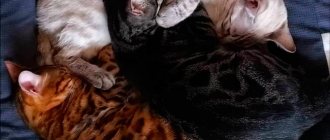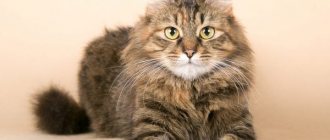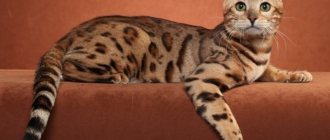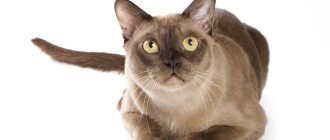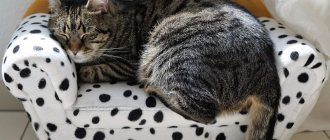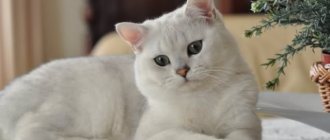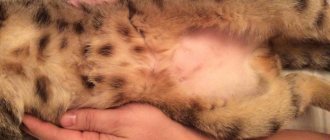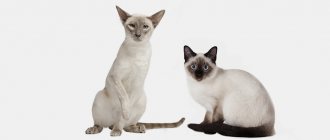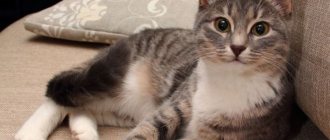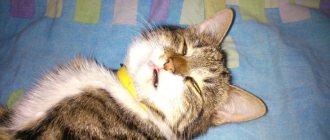Briefly about the breed
The Bengal cat is a broad-shouldered and muscular pet with a short-haired spotted or merle pattern.
The head of the Bengal is pointed, the neck is short and powerful, and the tail is of medium length.
The Bengal cat is a broad-shouldered and muscular pet.
The color of the cats resembles their leopard ancestors. The color range varies within brown shades. There are also snow and silver Bengals.
This is one of the cat breeds that lead an active lifestyle. Bengalis have developed mental abilities, inherited from their ancestors, who needed them to survive in the wild.
The paws of Bengal cats are particularly dexterous. Many representatives of the breed can easily move and carry objects, open and close doors.
During the process of domestication, the aggression inherent in their ancestors completely disappeared. Bengal cats are peaceful and playful, but they value freedom highly and are not very fond of being held.
How long do Bengal cats live?
Bengals, like other cats, live about 12–16 years, or longer if kept indoors. Some states mandate that Bengals be kept indoors only and microchipped; It is recommended to keep your Bengal cat inside at all times to avoid theft or premature death.
Outdoor cats, unfortunately, have a much shorter lifespan than indoor cats. While most indoor cats can live to be 18-20 years old, outdoor cats live on average 2-5 years.
This number is both devastating and shocking. Outdoor cats face endless dangers from both predators and humans, so keep your little ones safe and inside!
Outdoor cats are also more vulnerable to disease and injury. From jumping out of trees and running into wildlife, it is important to keep an eye on your cat when outdoors. Cats can safely roam outdoors as long as they are wearing a harness or under strict time restrictions. Cat sitting is a responsible task as a pet owner.
Why monitor the development of newborn kittens?
The weight of kittens is an indicator of their health.
Kittens can lose weight for the following reasons:
- congenital and acquired diseases;
- parasite infection;
- improper diet;
- breed or genetic abnormalities.
In order to timely identify deviations from the norm of nutrition and possible diseases, the owner of a Bengal cat is recommended to compare the kitten’s weight with the norms daily during the first weeks of life. In the future, the frequency of weighing can be reduced to 2 times a week.
Be sure to read:
Short-haired and smooth-haired cat breeds: names of breeds with photographs
Care and feeding of Bengals
A short-haired cat brings less worries at home than its long-haired counterparts, which makes caring for your pet much easier. Keeping and caring for a cat is not difficult: 2-3 times a week, devote a little time to combing the fur, which a soft rubber brush will help with. Sometimes you may not even notice the shedding, but once the procedure has begun, it is better to comb the kitty more often.
The descendant of a wild leopard cat needs to trim its claws once every couple of weeks. The ears are cleaned at the same intervals with a damp cotton pad.
It is also necessary to take care of your pet's oral cavity by brushing its teeth once a week.

